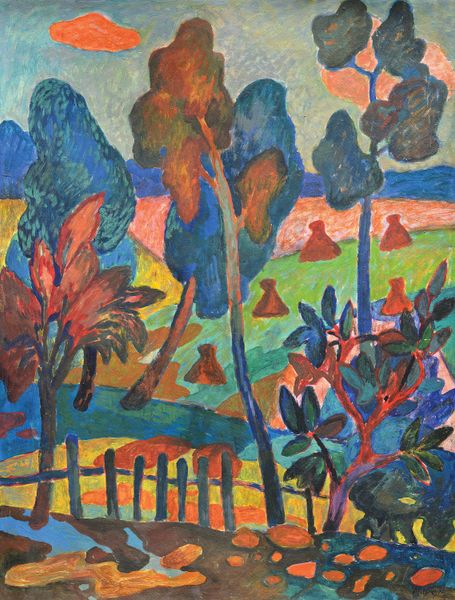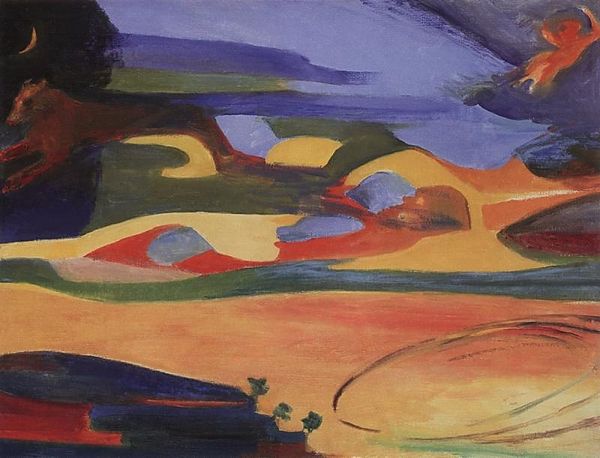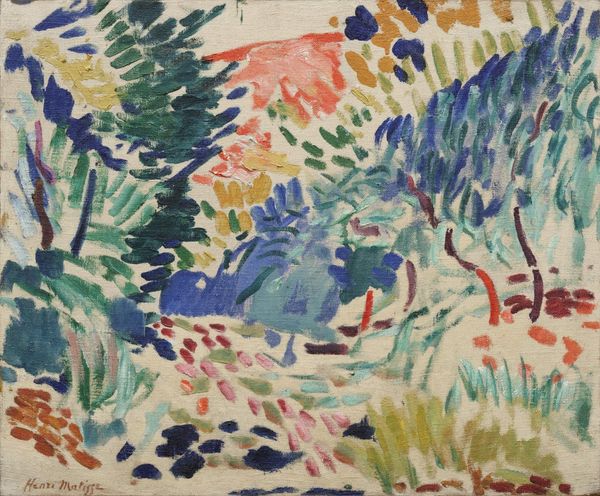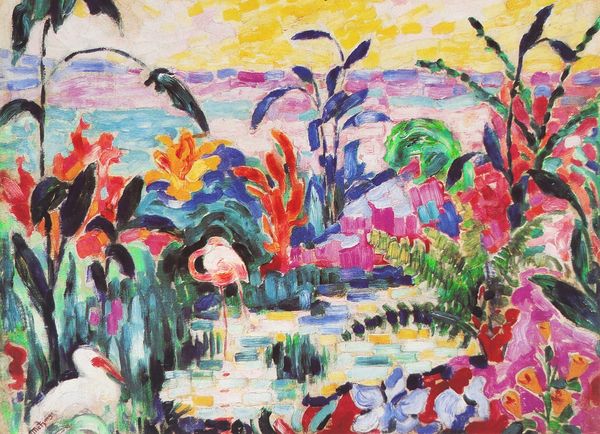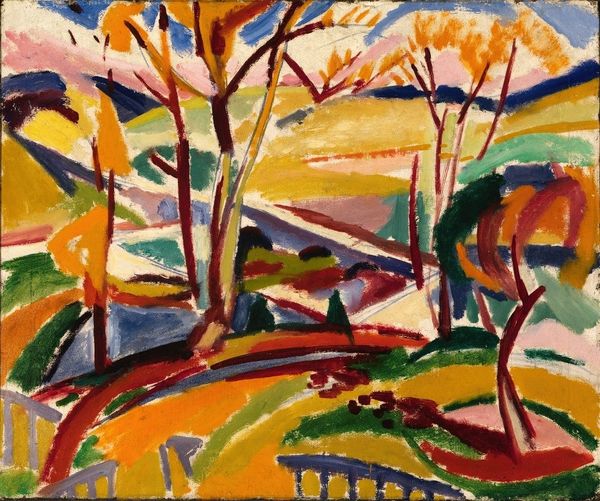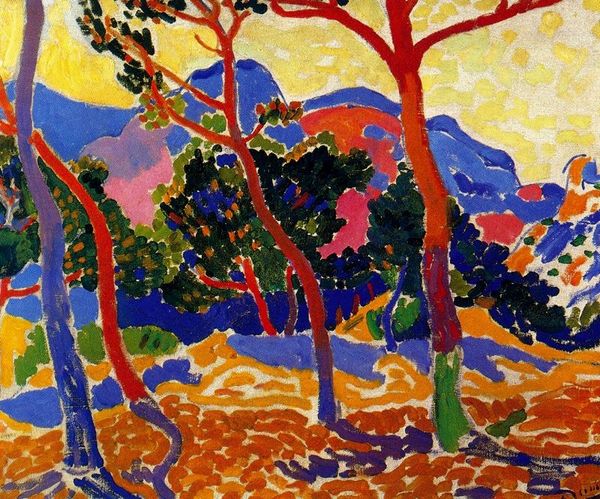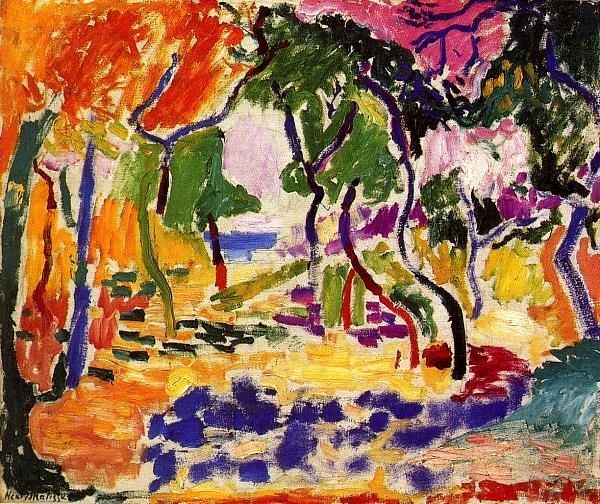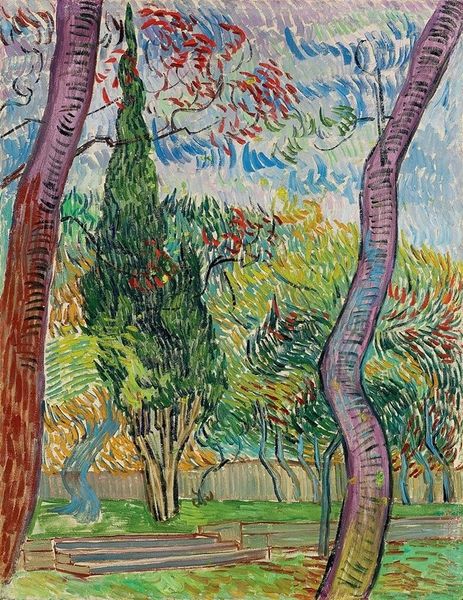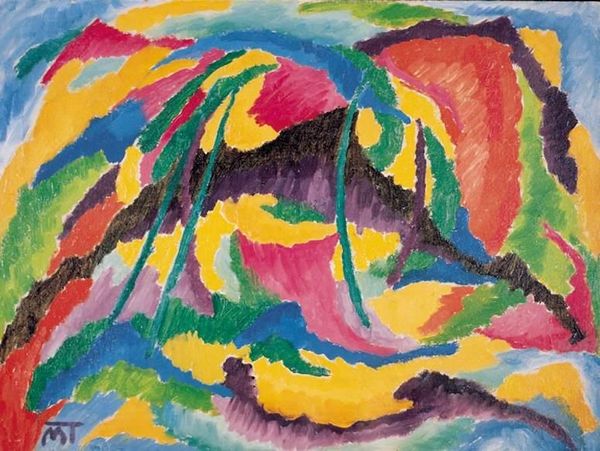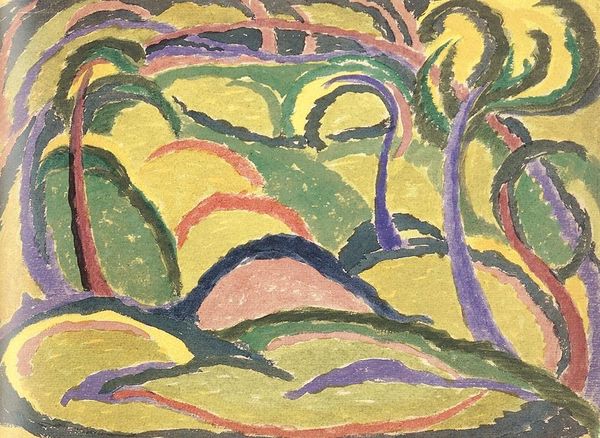
Copyright: Public domain
"Tahitian Landscape" is a watercolor created by Paul Gauguin, an artist whose legacy is deeply entwined with questions of cultural appropriation and the romanticized ideal of the "primitive." Gauguin sought an escape from what he saw as the corruption of Western society, and Tahiti became his refuge. However, his vision of Tahiti was filtered through a colonial lens, one that often exoticized and misrepresented the local culture. In this landscape, vibrant colors and lush vegetation evoke a sense of paradise, yet it's crucial to remember the complex history of colonialism and its impact on the Tahitian people. Gauguin's work raises difficult questions about the relationship between art, cultural exchange, and power dynamics. While the beauty of the landscape is undeniable, it's important to consider the artist's role as an outsider looking in. This image reminds us to approach Gauguin's work with a critical eye, acknowledging both its artistic merit and its problematic representation of Tahitian life.
Comments
No comments
Be the first to comment and join the conversation on the ultimate creative platform.
